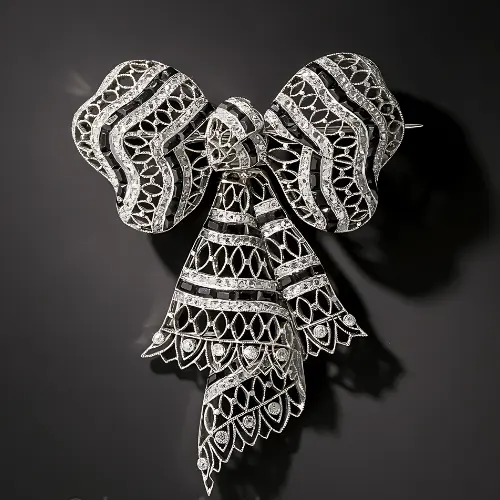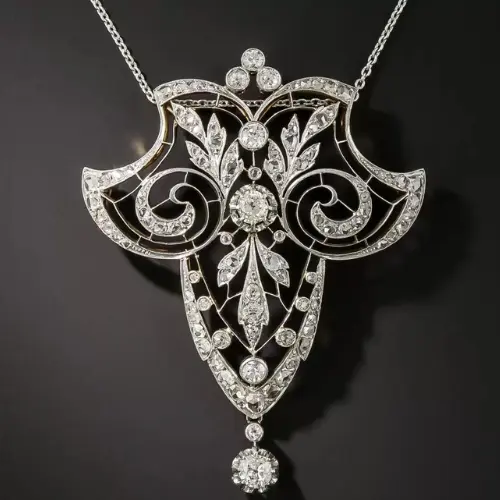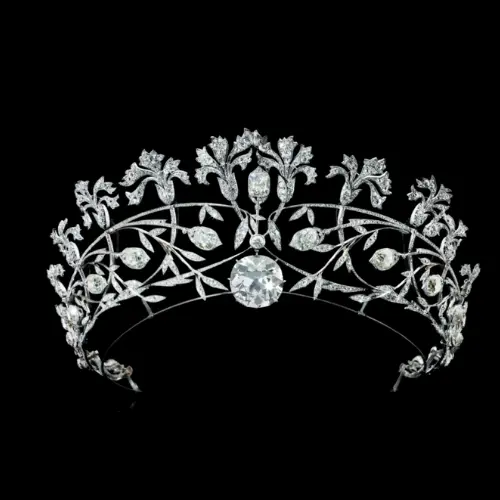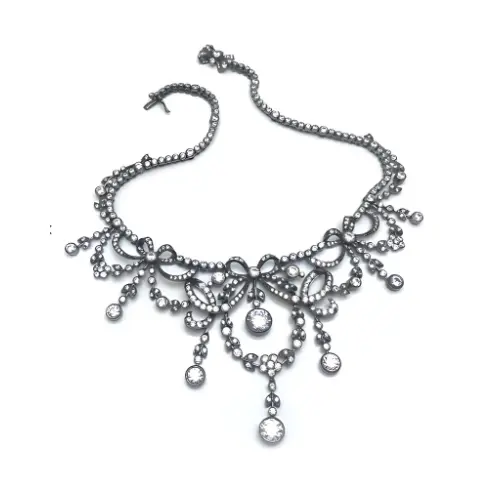
The Belle Époque era, meaning "Beautiful Era" in French, spanned from the late 19th century to the outbreak of World War I in 1914. This period is renowned for its cultural and artistic flourishing, particularly in Europe. Among its many contributions to art and fashion, Belle Époque jewelry stands out for its intricate designs, exquisite craftsmanship, and the luxurious materials used. Let’s delve into the enchanting world of Belle Époque jewelry, exploring its characteristics, influences, and enduring legacy.
Historical Context:
The Belle Époque era emerged in the aftermath of the Franco-Prussian War, a time when Europe experienced a newfound sense of optimism and prosperity. This era witnessed significant advancements in technology, the flourishing of the arts, and a departure from the rigid societal norms of the Victorian era. The spirit of innovation and celebration of beauty paved the way for the creation of jewelry that reflected the ideals of the time.
Artistic Influences:
The Belle Époque era was characterised by a fusion of artistic movements, with influences from the Art Nouveau and Edwardian styles. Jewelry designers drew inspiration from nature, incorporating intricate floral motifs, delicate lace-like patterns, and ethereal designs. The prevailing taste for femininity and grace gave rise to pieces that celebrated the delicacy of the female form, capturing the essence of the era's aesthetic.
Characteristics of Belle Époque Jewelry

Belle Époque jewelry is synonymous with elegance, sophistication, and an unparalleled level of detail. Key characteristics include:
1. Intricate Designs: Jewelry from this era is known for its elaborate and delicate designs. Common motifs include bows, garlands, flowers, and lace-like patterns, all intricately crafted to create a sense of lightness and refinement.
2. Luxurious Materials: Jewelers of the Belle Époque period favored high-quality materials. Platinum, which was introduced to jewelry making during this time, became the metal of choice due to its strength and ability to hold delicate settings. Diamonds and pearls were prominently featured, often complemented by other precious stones like sapphires, emeralds, and rubies.
3. Innovative Techniques: The period saw significant advancements in jewelry-making techniques. The use of platinum allowed for more intricate settings and greater durability. Millegrain, a technique involving tiny beaded edges around stones, became popular, adding a delicate sparkle to the pieces.
In terms of techniques, the Belle Époque era witnessed a resurgence of craftsmanship and intricate detailing. Filigree, a technique involving the intricate weaving of fine metal wires, became highly popular. Enamel work, a method of fusing coloured glass onto metal, was employed to add vibrant hues to the jewelry. The meticulous use of milgrain, tiny beads along the edges of metalwork, further enhanced the overall sophistication of the pieces.
4. Influence of Art Nouveau: The Art Nouveau movement, with its emphasis on natural forms and flowing lines, greatly influenced Belle Époque jewelry. This is evident in the organic shapes and nature-inspired motifs prevalent in the designs.
Influences on Belle Époque Jewelry
Belle Époque jewelry did not exist in a vacuum; it was shaped by various social and artistic influences:
1. Social and Economic Climate: The Belle Époque period was marked by relative peace and prosperity, particularly in Europe. This economic stability allowed the wealthy elite to indulge in luxury goods, including high-end jewelry.
2. Cultural Flourishing: This era saw a blossoming of the arts, from literature and music to fine art and fashion. Jewelry design was influenced by this cultural renaissance, drawing inspiration from contemporary artistic trends and movements.
3. Technological Advancements: Advances in mining and gem cutting, along with the discovery of new diamond deposits in South Africa, increased the availability of precious stones. This allowed jewelers to experiment with more elaborate and ambitious designs.
Belle Époque Jewelry Staples
Brooches

Brooches were essential in Belle Époque fashion, ranging from simple bar designs embellished with gemstones to intricate shapes adorned with diamonds. Popular motifs included garlands, bows, and florals.
Ribbon Motif and Queen Alexandra

Queen Alexandra of Denmark popularized elaborate choker necklaces, also known as colliers de chien or “dog collars.” These evolved from the Victorian velvet bands to rows of pearls and intricate designs, covering significant neck area. Alexandra famously wore a multi-strand pearl choker to conceal a scar on her neck. replica watches canada
Festoon Necklaces
Festoon necklaces featured structural, draped designs that extended from chokers and cascaded to the chest. These necklaces, with their intricate layers, often resembled wreaths, garlands, or spiderwebs and were adorned with various precious and semi-precious stones. rolex replica uk
Lavalieres

Lavalieres, pendulum-style necklaces with a pendant directly attached to the chain, revived during this era. First popularized in the 17th century by King Louis XIV’s mistress, the Duchess of La Vallière, this style drew inspiration from the French court, a significant influence on Belle Époque jewelers.
Sautoirs

Sautoirs were long necklaces, typically made of woven or twisted ropes of pearls, suspending a tassel or ornament. They complemented the early 20th-century columnar dresses, enhancing the elongated feminine silhouette.
Rings

Refined rings were a staple, with platinum and diamonds being the most sought-after combination. Pearls, rubies, and sapphires also featured prominently, often finished with Millegrain detailing. Designs ranged from understated to elaborate, incorporating classic Belle Époque motifs and intricate engravings.
Stomachers
.webp)
Stomachers, or devants de corsage, were large adornments for a dress’s bodice. Evolving into ornate pieces made of gold, platinum, or silver, they were typically decorated with diamonds and pearls. Often part of a parure (matching jewelry set), stomachers completed formal court robes and ball gowns, symbolizing social status. Their weight meant they were worn with corsets.
Tiaras:

Belle Époque tiaras are characterized by their intricate and delicate designs, reflecting the era's aesthetic values. These tiaras often feature lace-like patterns with motifs such as floral garlands, ribbons, bows, and laurel wreaths, all meticulously crafted to convey a sense of lightness and elegance. The use of platinum in jewelry making during this period was significant, as its strength and malleability allowed jewelers to create intricate settings that were both durable and ethereal in appearance.
Diamonds were the predominant gemstone used in Belle Époque tiaras, frequently complemented by pearls, sapphires, emeralds, and rubies. The inclusion of these precious stones added a dazzling brilliance and enhanced the regal appearance of the tiaras. Additionally, the millegrain technique, which became popular during this time, involved creating tiny beaded edges around gemstones. This technique provided a subtle sparkle and a refined finish to the pieces, further contributing to their overall elegance and sophistication.
Notable Belle Époque Jewelers
Several jewelers became renowned for their exceptional work during the Belle Époque period:
1. Cartier: The House of Cartier epitomized Belle Époque elegance. Their pieces from this era often featured intricate platinum settings and an abundance of diamonds, creating a sense of ethereal lightness.
2. Boucheron: Known for their innovative designs and use of color, Boucheron created stunning pieces that were both luxurious and whimsical, incorporating a variety of gemstones and intricate details.
3. Tiffany & Co.: While primarily an American jeweler, Tiffany & Co. embraced the Belle Époque style, producing exquisite pieces that combined American craftsmanship with European elegance.
Belle Époque jewelry represents a pinnacle of artistry and craftsmanship in the history of fine jewelry. Its intricate designs, luxurious materials, and innovative techniques reflect a period of cultural and artistic flourishing. Whether through original pieces or modern interpretations, the elegance and sophistication of Belle Époque jewelry continue to captivate and inspire.
You may also like:
WHAT ARE THE DIFFERENT VINTAGE JEWELRY ERAS?
THE REGAL ELEGANCE OF MARIA ALEXANDROVNAS FRINGE TIARA: A HISTORICAL MASTERPIECE
THE TIMELESS ELEGANCE OF THE STRATHMORE ROSE TIARA: A HISTORIC ROYAL HEIRLOOM









